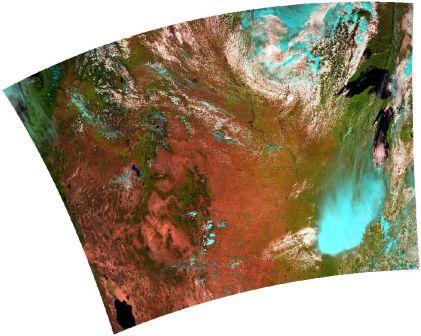Fostering Innovation - Support for VIIRS in ENVI
Anonym
People ask me why I like working at NV5 (formerly Exelis VIS), and I always have an easy answer: Our customers do inspiring work.
Scientists and researchers use ENVI and IDL to create innovative solutions to tough problems, so it's always great when we can provide new tools that help them get their jobs done. I'm especially excited about a new tool for Suomi National Polar-Orbiting Partnership (NPP) Visible-Infrared Imaging Radiometer (VIIRS) data that was recently added with the release of ENVI 5 Service Pack 3.
VIIRS is an advanced radiometer, combining the capabilities of two operational predecessor instruments, the Advanced Very High Resolution Radiometer (AVHRR) for optical imagery, and the Operational Line Scanner (OLS)on the Defense Meteorological Satellite System (DMSP) for day/night imagery. VIIRS will be used by the Earth observation community for a host of applications, including providing observations for input to weather and climate models, monitoring dust and aerosols in the atmosphere, monitoring weather systems, wildfires, floods, volcanic eruptions, and assessing impacts from extreme weather events. VIIRS data will contribute to the creation of over 20 specialized products used for monitoring the Earth's atmosphere, seas, and land surfaces.

VIIRS RGB composite image over the USA. R=I3 (1610 nm), G=I2 (865 nm) & B=I1 (640 nm)
VIIRS imagery is stunning to display and explore in ENVI. This image (created in ENVI from a VIIRS image downloaded from NOAA CLASS) shows an RGB composite image projected into a geographic projection. VIIRS is an environmental sensor, and is particularly good at capturing land cover in high definition, as depicted in this image. One image collection contains an amazing level of detail over a huge portion of the Earth's surface.
ENVI is set up to read VIIRS data distributed through the NOAA CLASS system in HDF5 format, and makes it easy to ingest and display the complex data format. ENVI can work with both Sensor Data Records (SDRs) and Environmental Data Records (EDRs), and can read I-bands, M-bands and the amazing new Day/Night Band (DNB). In ENVI, it takes one step to do advanced processing like removing gaps and merging data granules, applying sensor calibrations (radiance or reflectance/thermal), and applying geocorrection and removing the bowtie deletion effect.